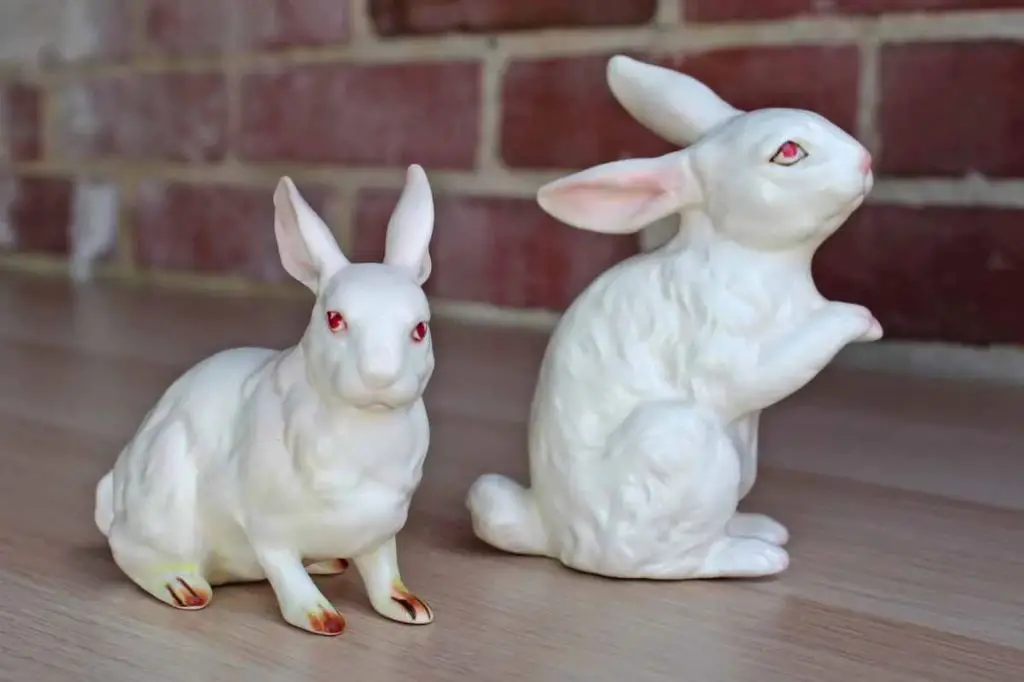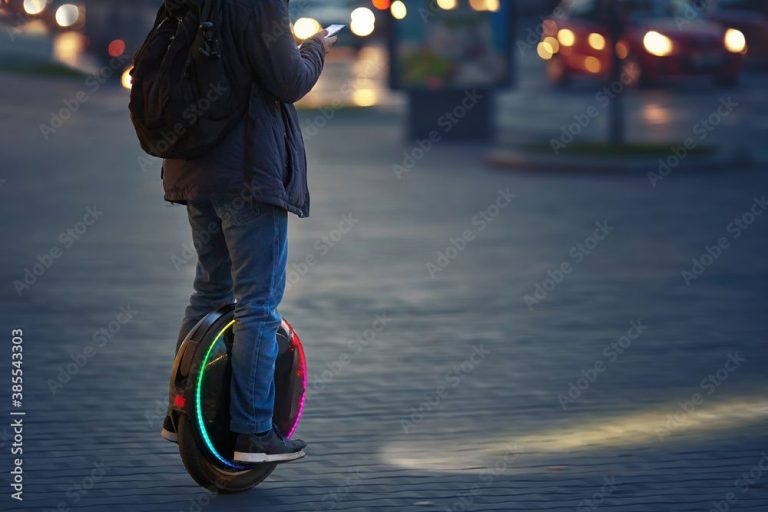What Are The Names Of Mccarty Pottery Bunnies?
Geo. E. McCarty Pottery, located in Merigold, Mississippi, is most well-known for producing collectible ceramic bunny figurines.
The pottery was founded in 1945 by George E. McCarty Sr., who learned the art of pottery making from his father. McCarty began producing simple functional stoneware pottery pieces like jugs, pitchers, and crocks. In 1956, he decided to make a bunny figurine after noticing many bunnies around the pottery property. This bunny design, featuring a cute, pudgy bunny with dotted eyes sitting up on its haunches, became wildly popular.
Soon the pottery shifted focus to producing bunnies in different sizes and colors to meet demand. The bunnies were marked with “McCarty Pottery” and numbered, turning them into collectible pieces. Today, vintage and antique McCarty bunnies are highly sought after by collectors and can sell for high prices depending on rarity.
Founding of Geo. E. McCarty Pottery
Geo. E. McCarty Pottery was founded by George E. McCarty in 1907 in Mercer County, Pennsylvania. McCarty began producing utilitarian stoneware pottery using local clay sources. He focused on making affordable, functional pottery for everyday households. The pottery was originally named Mercer Pottery and operated until George’s passing in 1944 [1].
Popularity of McCarty Bunnies
Geo. E. McCarty Pottery became known for whimsical animal figurines, especially bunnies. The Pottery started producing bunnies in the 1920s and they quickly became the most popular figurine. The bunnies came in a variety of colors and sizes, from tiny ones that fit in the palm of your hand to larger bunnies over a foot tall.
The bunnies were made from high-quality glossy glazes and had charming expressions. Each bunny was hand-made and hand-painted, making every bunny unique. The public adored the McCarty bunnies for their cute appearances and high quality craftsmanship. They became cherished collectibles and were given as gifts for Easter, birthdays, weddings, and other special occasions.
Even during hard times like the Depression, the bunnies remained popular as affordable luxuries to lift people’s spirits. Several generations grew up with fond memories of McCarty bunnies. Their warm nostalgia and enduring cuteness helped make McCarty bunnies the Pottery’s legacy.
Different Types of Bunnies

McCarty pottery bunnies come in a variety of sizes, coloring, and poses. Some of the most common types include:
Size variations:
- Small bunnies around 5-6 inches tall
- Medium bunnies around 8-10 inches tall
- Large bunnies 12-15 inches tall
- Extra large bunnies over 15 inches tall
Color variations:
- Solid white
- Solid brown
- White with brown spots or patches
- White with pink accents on nose, ears, feet
Pose variations:
- Sitting
- Standing
- Reclining
- Heads turned in different directions
Some of the most rare and valuable bunnies are the extra large ones over 15 inches tall. The white bunnies with pink accents are also popular among collectors. The posing can also impact value, with unique poses like a standing bunny being more desirable.
Most Common Bunny Names
McCarty Pottery bunnies were sculpted and produced in a variety of styles and given distinctive names. Some of the most popular McCarty bunny names include:
- Lettuce – One of the most iconic McCarty bunnies, Lettuce features tall erect ears and a cute expression. Lettuce bunnies come in a range of glazes and colors.
- Mopsy – Known for her sweet face and floppy ears, Mopsy bunnies were produced in nutmeg, blue, pink, and other glazes.
- Tuppers – These chubby bunnies have become collector’s items. Tuppers Mama is especially sought after.
- Flopsy – Flopsy bunnies are recognized by their bent over ears and adorable poses. They are found in yellow, blue, and pink glazes.
- Cottontail – Cottontail bunnies have fluffy tails, perky ears, and come in sitting or standing poses.
Other common bunny names from McCarty include Mary, Peter, Jack, Jill, Hoppy, Happy, Thumper, and more. Each bunny has subtle distinguishing characteristics in expression and posing.
Bunny Markings
One of the key ways to identify authentic McCarty bunnies is by examining the markings on the figurines. McCarty used distinctive techniques to create the markings that make each bunny unique.
The most common markings found on McCarty bunnies include:
- Spots – Small brown or black spots of glaze on the bunny’s fur to mimic natural rabbit markings.
- Smudges – Irregular splotches of color on the bunny to make the fur look more realistic.
- River Lines – Wavy black lines representing the Mississippi River, a signature of McCarty pottery. Usually found on the bunny’s belly or feet.
- Paw Pads – Dark colored glaze on the paws to resemble a real rabbit’s foot pads.
- Whiskers – Dark lines around the muzzle for whiskers made with a trailing glaze technique.
- Eye Markings – Distinctive brush stroke patterns around the eyes in black, brown or blue.
The specific combination of markings can help identify which original McCarty bunny mold the figurine was made from. For example, the “Dot” bunny has rows of spots, while the “Dimples” bunny has smudges on its haunches. Studying the subtle markings is key for collectors to distinguish real McCarty bunnies from fakes.
Source: https://bosworthbunnies.weebly.com/bunny-colour-guide.html
Rarity and Value
McCarty bunnies range greatly in rarity and value depending on the style, size, color, and condition. Some of the rarest and most valuable bunnies include:
- Limited edition bunnies like the Easter Bunny or Christmas Bunny, which were only produced for a short time. These can sell for $150 or more.
- Large, 18-20 inch bunnies. The jumbo bunnies are harder to find and command higher prices around $100-300.
- Unusual colors like blue or pink. Most bunnies came in brown or white, so colored ones are rare. Prices typically start around $200.
- Highly detailed, intricate designs and decorations like dolls or chickens. Complex bunnies can fetch $500-1000.
In general, bunnies in mint condition with original tags intact garner premium prices. Damage like chips, cracks, or faded paint substantially reduces value. Bunnies in excellent condition typically sell in the $50-150 range on average. Rare names like Cinnamon and Nutmeg can add appeal and value for collectors. When buying McCarty bunnies, carefully inspect condition and look for rare traits to identify potentially valuable finds.
Buying and Collecting
McCarty Pottery pieces, especially the bunnies, are highly sought after by collectors. Authentic McCarty Pottery can be found from a few reputable sources:
Antique stores specializing in American pottery often have a selection of vintage McCarty bunnies. Be sure to examine the markings to authenticate the piece. Reputable antique dealers can provide provenance and history with certified authentic items.
Auction houses like Christie’s, Sotheby’s, and Morphy Auctions occasionally feature McCarty Pottery in their sales. These auctions provide a rare opportunity to bid on exceptional pieces.
There are also several online auction sites like eBay and Etsy where individuals sell McCarty Pottery. Carefully vet sellers, examine photos closely, and ask questions to ensure authenticity.
Bunnies and other items may also be found from private collectors. Collector groups on social media platforms can be a good way to network and find well-cared for pieces.
When buying McCarty Pottery, condition, markings, coloration, and glaze should be carefully inspected to verify authenticity and value. Consulting books like Those Bunnies by Gene and Cathy Florence can aid in identifying details.[1]
Displaying and Caring for Bunnies
McCarty bunnies are beloved collectible figurines, so it’s important to properly display and care for them to preserve their condition. Here are some tips:
Display bunnies on secure shelves or in curio cabinets, away from direct sunlight which can cause fading. Place felt pads under them to prevent scratches. Bunnies can also be beautifully arranged together on tabletops or bookshelves. Just be sure the display area is free of moisture and temperature fluctuations.
Dust bunnies regularly with a soft brush or cloth to prevent buildup. Check for cracks, chips, or other damage. Avoid using chemical cleaners or getting the bunnies wet as this can damage the vintage glaze.
Wrap bunnies carefully with tissue paper or bubble wrap if packing them for moving or storage. Place them in a sturdy box filled with packing material to prevent shifting and cushion against shocks.
Consider displaying bunnies behind glass for protection. Curio cabinets or individual acrylic boxes work well. Handle vintage bunnies very carefully by firmly grasping the base, as they can be fragile.
With proper care in display and handling, McCarty bunnies can be treasured for generations. Their delightful designs and nostalgic charm make them cherished additions to any collection.
Legacy and Influence
The McCarty Pottery brand and the iconic bunny figurines had a significant influence and legacy on American pottery and collectibles. The McCarty bunnies became extremely popular collectible figurines following World War II and continued through the 1960s era, becoming one of the most popular types of collectible pottery of that time according to the Encyclopedia of Mississippi History [1].
At their peak popularity in the 1960s, it’s estimated Geo. E. McCarty Pottery produced over 1 million bunny figurines per year. The bunnies were sold nationwide through catalogs and department stores like Sears [2]. Collectors today still seek out vintage McCarty bunnies, with rare pieces fetching high prices at auction.
The McCarty bunny design and glazing techniques influenced many other American pottery companies that emerged after World War II. Many companies emulated or copied parts of the McCarty style and production process in order to capitalize on the popularity of the collectible figurines. This expanded the overall American pottery industry and created more competition and innovation.
While Geo. E. McCarty Pottery closed in 1989 after 64 years in operation, collectors ensure the McCarty legacy lives on today. Vintage bunnies remain popular collectibles that provide a nostalgic connection to the mid-20th century era and represent a high point in American ceramic craftsmanship and design.


